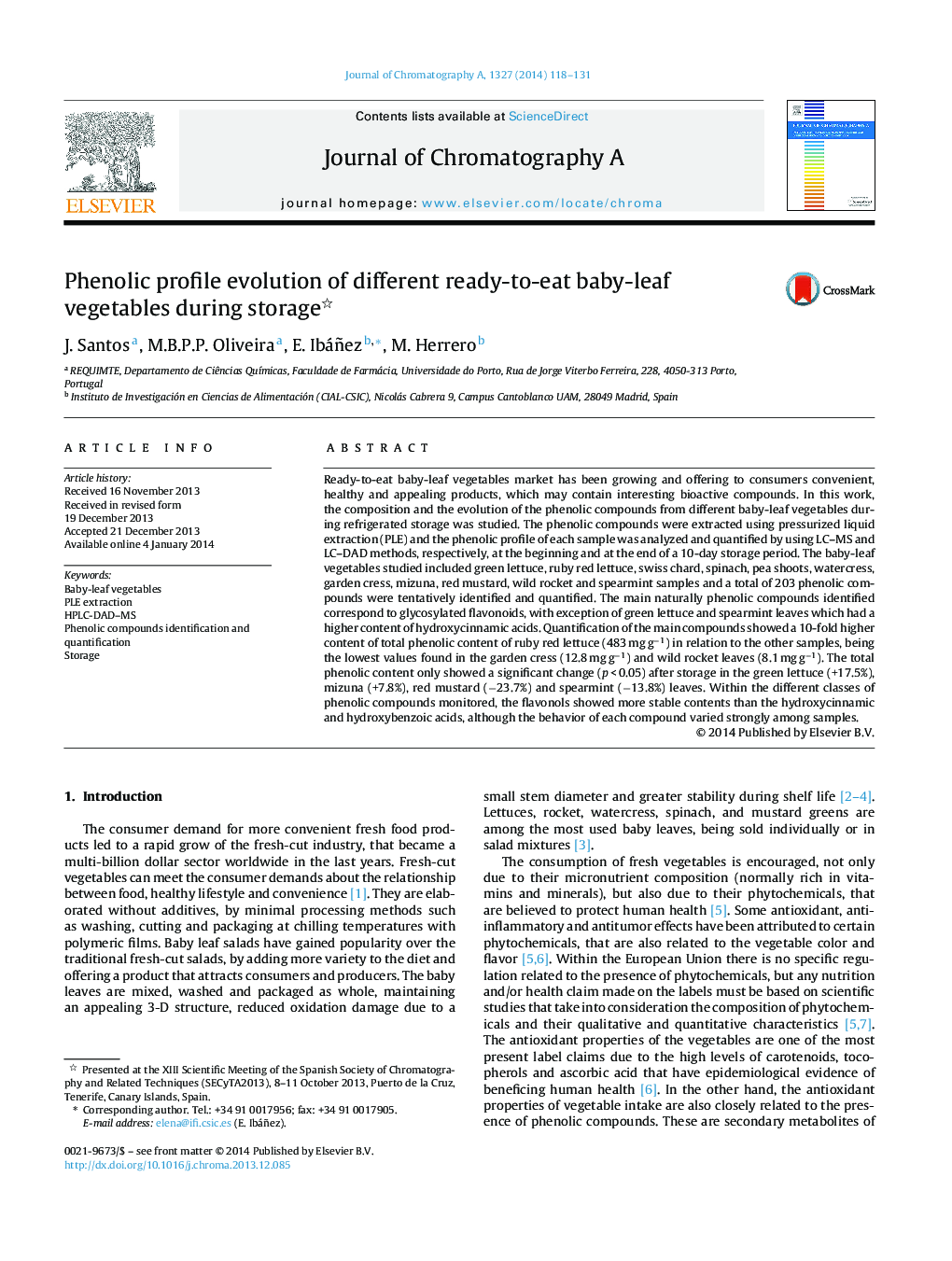| کد مقاله | کد نشریه | سال انتشار | مقاله انگلیسی | نسخه تمام متن |
|---|---|---|---|---|
| 1199702 | 1493599 | 2014 | 14 صفحه PDF | دانلود رایگان |
• A pressurized liquid extraction method was optimized and applied to the extraction of phenolic compounds of 11 baby-leaf samples.
• An HPLC-DAD–MS method was developed to identify and quantify different phenolic compounds.
• Comparison of the levels of phenolic compounds was made between the beginning and end of storage, showing small difference between sampling days.
• Flavonols were the most stable compounds during refrigerated storage.
Ready-to-eat baby-leaf vegetables market has been growing and offering to consumers convenient, healthy and appealing products, which may contain interesting bioactive compounds. In this work, the composition and the evolution of the phenolic compounds from different baby-leaf vegetables during refrigerated storage was studied. The phenolic compounds were extracted using pressurized liquid extraction (PLE) and the phenolic profile of each sample was analyzed and quantified by using LC–MS and LC–DAD methods, respectively, at the beginning and at the end of a 10-day storage period. The baby-leaf vegetables studied included green lettuce, ruby red lettuce, swiss chard, spinach, pea shoots, watercress, garden cress, mizuna, red mustard, wild rocket and spearmint samples and a total of 203 phenolic compounds were tentatively identified and quantified. The main naturally phenolic compounds identified correspond to glycosylated flavonoids, with exception of green lettuce and spearmint leaves which had a higher content of hydroxycinnamic acids. Quantification of the main compounds showed a 10-fold higher content of total phenolic content of ruby red lettuce (483 mg g−1) in relation to the other samples, being the lowest values found in the garden cress (12.8 mg g−1) and wild rocket leaves (8.1 mg g−1). The total phenolic content only showed a significant change (p < 0.05) after storage in the green lettuce (+17.5%), mizuna (+7.8%), red mustard (−23.7%) and spearmint (−13.8%) leaves. Within the different classes of phenolic compounds monitored, the flavonols showed more stable contents than the hydroxycinnamic and hydroxybenzoic acids, although the behavior of each compound varied strongly among samples.
Journal: Journal of Chromatography A - Volume 1327, 31 January 2014, Pages 118–131
